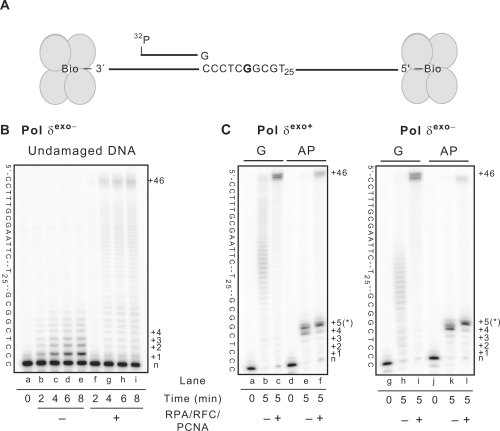Figure 2.
Stimulation of Pol δ activity by accessory proteins. (A) Schematic diagram of the substrate used in TLS assays. The template is a 102-mer with biotin at both the five and three ends. The radio-labeled primer is a 26-mer. (B) Time course of reactions of Pol δexo− using undamaged template that does not have sequence specific pause sites. Reactions are confirmed to be under single-interaction conditions (see ‘Materials and methods’ section). The template sequence is given to the left of the image and the number of nucleotide incorporation (+1, +2, etc.) is given on the right. The +46 incorporation represents synthesis to the end of the template. (C) Gel images of reaction products created using a S:E ratio of 1:2 (polymerase excess) with 102-mer templates containing either undamaged G or tetrahydrofuran (an AP site mimic) at the fifth incorporation position (*). These images show that in the presence of the accessory proteins, stimulation of AP site bypass occurs, similar to a previous report (53). Details are the same as in (B). Panels (B) and (C) confirm that the accessory proteins are active under the conditions used.

